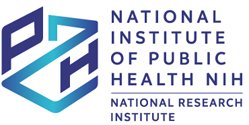Survey on food dyes additives in food products commonly consumed by Algerian children
1
Department of Biology, Faculty of Natural and Life Sciences, University of Djelfa, Djelfa, Algeria
2
Laboratoire d’Exploration et Valorisation des Écosystèmes Steppiques, Faculty of Natural and Life Sciences, University of Djelfa, Djelfa, Algeria
3
Department of Agro-veterinary Science, Faculty of Natural and Life Sciences, University of Djelfa, Djelfa, Algeria
Data nadesłania: 21-08-2024
Data ostatniej rewizji: 30-10-2024
Data akceptacji: 18-11-2024
Data publikacji online: 11-02-2025
Data publikacji: 26-06-2025
Autor do korespondencji
Djihad Bencherit
Department of Biology, Faculty of Natural and Life Sciences, University of Djelfa, Djelfa, Algeria
Department of Biology, Faculty of Natural and Life Sciences, University of Djelfa, Djelfa, Algeria
Rocz Panstw Zakl Hig 2025;76(1):39-45
SŁOWA KLUCZOWE
DZIEDZINY
STRESZCZENIE
Background: Children are generally attracted to colorful foods. However, some food dyes are suspected of exacerbating the activity of children and inducing other health problems that can reach reprotoxicity and carcinogenicity. Objective: This study aims to explore the presence of dyes such as E102, E104, E110, E121, E122, E123, E124, E127, E129, E132, E133, E143 and E171 in food products widely consumed by children in Algeria notably sweets and chocolates, beverages and ice creams, yogurts and biscuits. Material and Methods: This work was carried out on 228 products including 57 biscuits, 47 drinks and ice creams,
20 yogurts and 104 sweets and chocolates. Information mentioned on the composition label of this products were recorded to determine the presence of studied dyes Results: Here, we report the abundance of the yellow dyes E102 (24.1%) and E110 (18%) in the tested products. Also, apart from E121, all the other assessed dyes were found. Sweets and chocolates are the products containing the most studied dyes. The analysis of the presence of combinations of these dyes shows that 7% of analyzed foods contain 2 dyes in their composition while 20% of the products contain at least 3 dyes at the same time. Additionally, 37.5% of sweets and chocolates contain a combination of at least 3 dyes in their ingredient list. Conclusions: In overall, except the E121, all assessed dyes were identified on the labels of food products widely consumed by children which encourage parents to be made aware of the risks associated with the ingestion of omnipresent dyes in children’s diets.
Udostępnij
ARTYKUŁ POWIĄZANY
Przetwarzamy dane osobowe zbierane podczas odwiedzania serwisu. Realizacja funkcji pozyskiwania informacji o użytkownikach i ich zachowaniu odbywa się poprzez dobrowolnie wprowadzone w formularzach informacje oraz zapisywanie w urządzeniach końcowych plików cookies (tzw. ciasteczka). Dane, w tym pliki cookies, wykorzystywane są w celu realizacji usług, zapewnienia wygodnego korzystania ze strony oraz w celu monitorowania ruchu zgodnie z Polityką prywatności. Dane są także zbierane i przetwarzane przez narzędzie Google Analytics (więcej).
Możesz zmienić ustawienia cookies w swojej przeglądarce. Ograniczenie stosowania plików cookies w konfiguracji przeglądarki może wpłynąć na niektóre funkcjonalności dostępne na stronie.
Możesz zmienić ustawienia cookies w swojej przeglądarce. Ograniczenie stosowania plików cookies w konfiguracji przeglądarki może wpłynąć na niektóre funkcjonalności dostępne na stronie.



